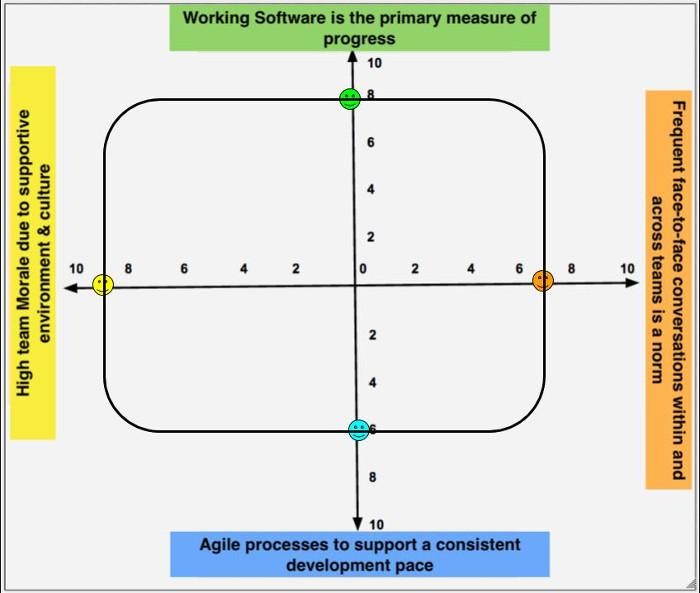 As a principal agile coach, my focus is to energise and inspire developers to adopt and follow through on the agile frameworks across our teams. When most of the developers did not like the metric of velocity, we tried something different. Instead of relying on velocity or adherence to processes, we measured the teams’ true agility by assessing their growth and capability, not just productivity. We felt this could be done by reflecting how closely their behaviours, actions, and decisions aligned to the core agile principles.
As a principal agile coach, my focus is to energise and inspire developers to adopt and follow through on the agile frameworks across our teams. When most of the developers did not like the metric of velocity, we tried something different. Instead of relying on velocity or adherence to processes, we measured the teams’ true agility by assessing their growth and capability, not just productivity. We felt this could be done by reflecting how closely their behaviours, actions, and decisions aligned to the core agile principles.
We introduced a radically new approach to tracking our journey of agile transformation. We started by creating an environment where these four behaviours were actively encouraged across the teams in the context of their agile journey:
- Experiment: Let us keep it fresh
- Share: Let us start with what we know
- Listen: Let us observe and reflect
- Learn: Let us develop ideas and understanding
When teams were given the freedom to experiment and develop their own flavour of agile, there was a lot less resistance and a lot more enthusiasm for continuous improvement. Since the teams were actively sharing, we started cross-pollinating the ideas and information into other teams. The teams were now mature, and self-correction started to happen whenever something didn’t work out as expected.
A new approach: Agile Reflection Deck
We developed the Agile Reflection Deck, where we divided the 12 agile principles into three templates consisting of four principles each. After each iteration, the team would reflect on how aligned they were with each of the principles and rate themselves on a scale of 1 to 10.
As the 12 agile principles are universal and generic, the teams had to engage in a lively discussion to gain a consensus on what each principle meant for their team. Then they had to average the team members’ ratings and plot that number on the axis where the agile principle was listed.
As we were a highly distributed team, we used online survey tools to capture the ratings during video conference sessions and then displayed them on the Agile Reflection Deck. Once we had the four ratings mapped onto each axis, we connected the dots to form a quadrilateral. Over time, the shape and size of this quadrilateral gave us a clear picture of the teams’ agile mindsets.
By allowing the teams to self-reflect and analyse how closely they were aligned to the agile principles, we were able to improve and grow with each iteration. During these few Sprints, when this experiment lasted, the teams did map their own journeys and made self-corrections to chart their course to agility.
Here are the three templates that you can use and try out the approach for your own team’s retrospectives.
1 – Agile Principles Quad 1 to 4 – Retro Template

 The What:
The What: minimizing the unknowns. Having a adequately refined backlog greatly reduces the time required for a Sprint Planning meeting as all the team is able to have common understanding of the development that will be undertaken.
minimizing the unknowns. Having a adequately refined backlog greatly reduces the time required for a Sprint Planning meeting as all the team is able to have common understanding of the development that will be undertaken.
 out with Manny Gonzalez, CEO at Scrum Alliance and engage in a discussion of organizational transformation that needs to take place for agile mindset and behaviors to take root. He mentioned Scrum Alliance is actively working on developing coaching sessions for Leadership roles as they face unique set to challenges in transforming the culture in an organization.
out with Manny Gonzalez, CEO at Scrum Alliance and engage in a discussion of organizational transformation that needs to take place for agile mindset and behaviors to take root. He mentioned Scrum Alliance is actively working on developing coaching sessions for Leadership roles as they face unique set to challenges in transforming the culture in an organization.
 intermingling of contributors and stakeholders. The team is not only focused on features that were loosely drawn up by the product manager but also works actively on the ones that the community is interested in.
intermingling of contributors and stakeholders. The team is not only focused on features that were loosely drawn up by the product manager but also works actively on the ones that the community is interested in.